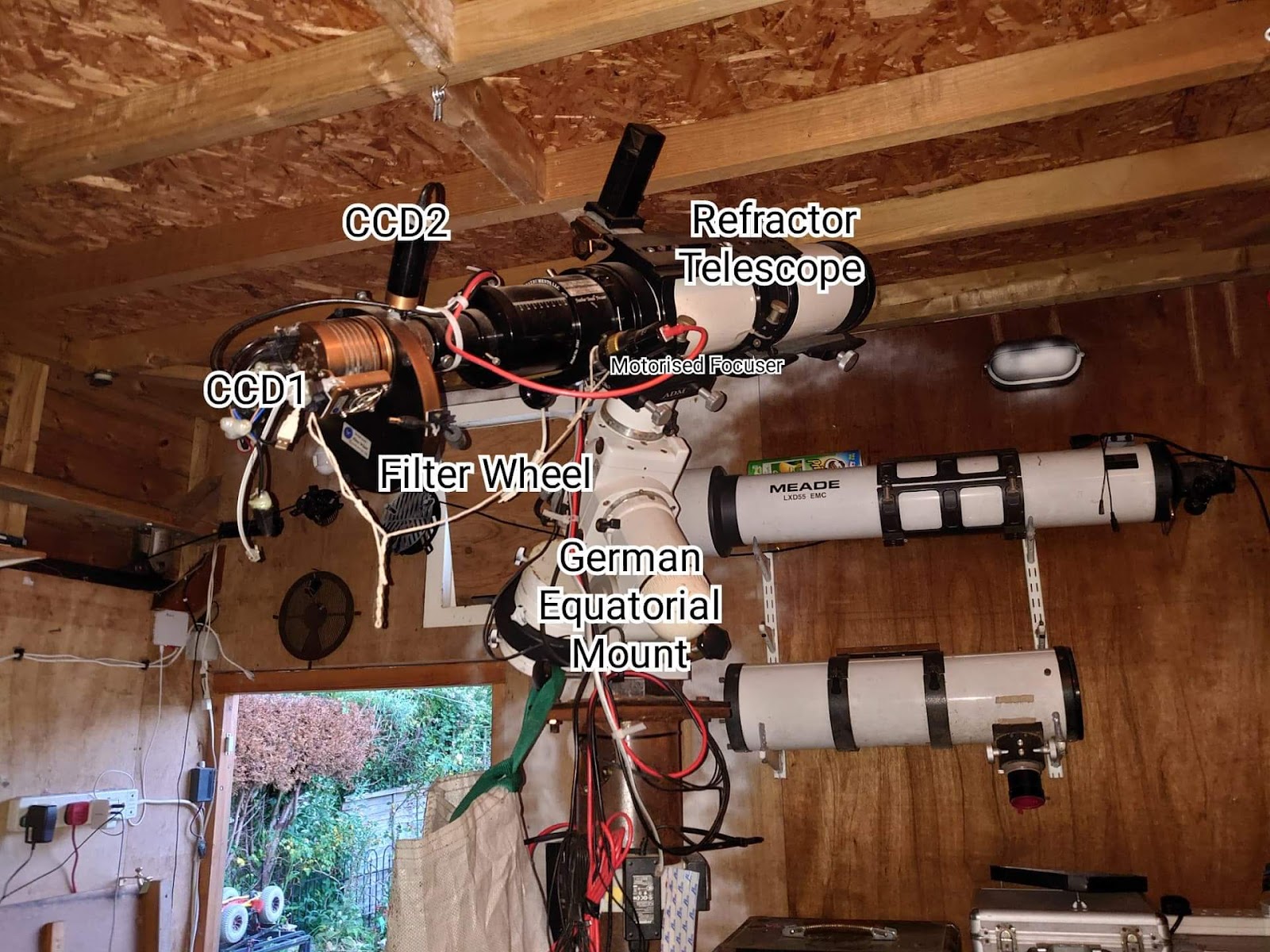South Common Observatory - Astrophotography Procedure
Author: Richie Jarvis © 2020-07-09
Website: https://deepsky.org.uk
Contact:
This e-mail address is being protected from spambots. You need JavaScript enabled to view it

Description of Parts
The camera is a peltier cooled CCD chip with a black and white Sony HDR sensor. Made by Starlight Xpress Instruments, the model is the SX814 Monochrome camera. To reduce electrical noise, it is cooled to -30 degrees below zero using an electrical cooler. Professional observatories use liquid nitrogen to do the same job.
Before I can start taking exposures, some initial calibration of the equipment is required. The computer needs to know where it is on Planet Earth as well as what time it is. GPS can be used is used to get that information, or it can be entered manually, using Google Maps, or the Internet to find the correct Latitude and Longitude. Once entered, the computer stores this information for future reference.
Initial Setup
Starting with the telescope in the home position, pointing North and with the weights down. Using the computer sky chart to control the mount to move the telescope to a bright star, and line it up on the camera chip. Repeat that three times and the computer knows how reality relates to its internal model of the sky. Luckily, if I “park” the mount after use, and don't knock it, it keeps pretty good alignment night after night, so I only need to repeat the full Initial Setup procedure once or twice a year.
Focusing the Camera
Before taking any exposures for use in an image, the telescope and camera need to be focused. Focus changes with temperature, this also means that each night the focus position will be slightly different. To add complexity, as the equipment cools, and contracts, the focus point changes. The automatic focuser I use, a Starlight Instruments (no relation to the camera manufacturer) Focuser Boss II Electronic Focusing Control and stepper motor. This unit learns the change in focus over a 5 degree celsius temperature drop, and using that calibration compensates for changes as the temperature drops automatically.
Before any of that, I need to find a star, and carry out an initial focus run. This is complicated further as each filter has a slightly different focus point. Each time I change the filters in the filter-wheel, I need to recalculate the relative differences in position between the Red, Green, Blue, Clear, Hydrogen Alpha, Oxygen 3, Sulphur 2 and Hydrogen Beta filters. Each one has a slightly different focus point. More calibration, but the relative calculations stored. I usually redo that once a year, or if I change the filters around.
Slewing to target
Once the stars are focused, I pick a target, say a galaxy or nebula, and tell the scope to slew (move) to point at that location.
The guide camera (CCD2) now needs to be told how it is aligned. This is a simple software routine which involves the computer making small movements to figure out which way the motors move in relation to the stars. Once done, it locks on and removes tracking errors automatically.
CCD1 is then ready to take a long exposure. At this point, CCD2 is taking pictures every second, sending commands to the mount motors to correct for errors. This keeps the stars on the same pixels on CCD1 during a long exposure! Otherwise you get lines, not points of light, and those do happen but go in the bin.
I take many exposures because the objects are so very very dim that long exposures to collect as much light as possible for a long time. That also introduces random noise in the raw data. To remove that, astrophotographers take multiple exposures for each filter. Some images require all the filters.
Example Results - Messier 51 - The Whirlpool Galaxy

Here is some more of my processed and published work:
https://deepsky.org.uk/astro-imaging.html
All images and text are licenced under the http://creativecommons.org/licenses/by-nc-sa/2.0/uk/
Contact: Richie Jarvis
This e-mail address is being protected from spambots. You need JavaScript enabled to view it
© 2020-07-09
|